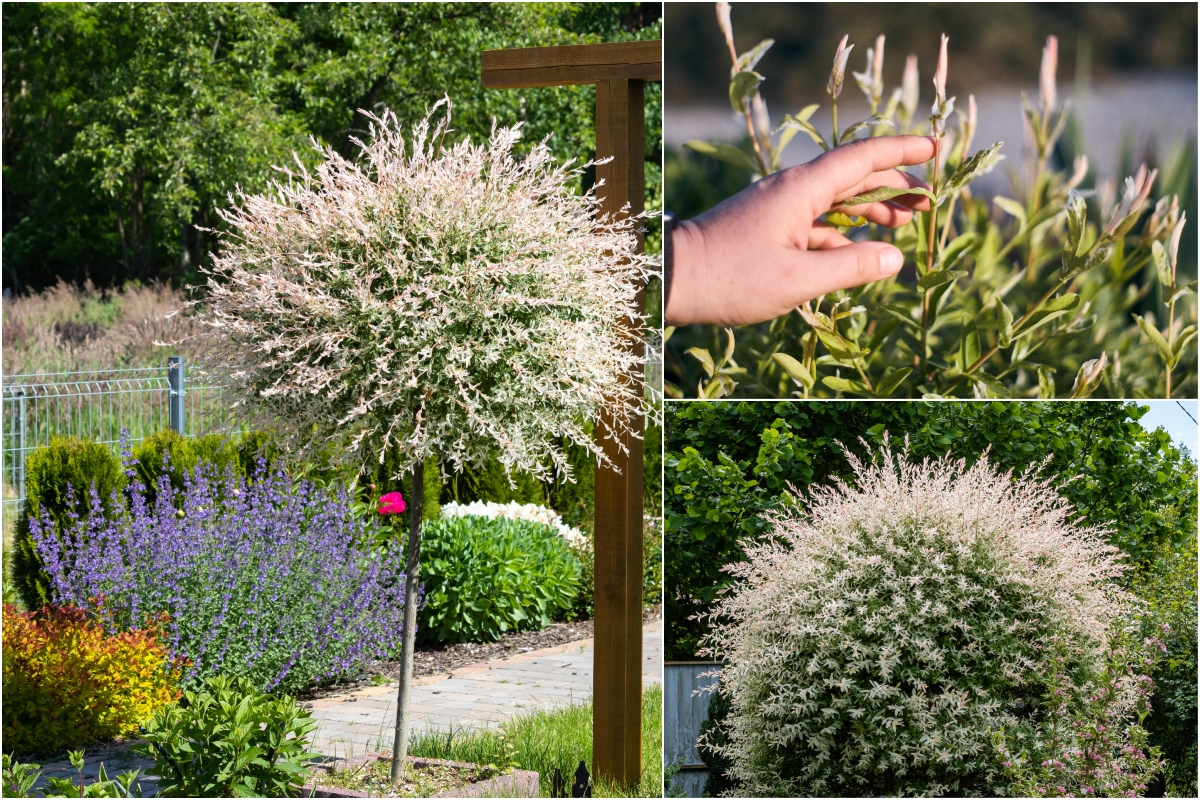
The swoon-worthy willow tree has long been a symbol of romance, but did you know that there are more than 350 different varieties of these gorgeous deciduous trees?
A particular beauty is the dappled willow tree, which easily makes a beautiful addition to your backyard.
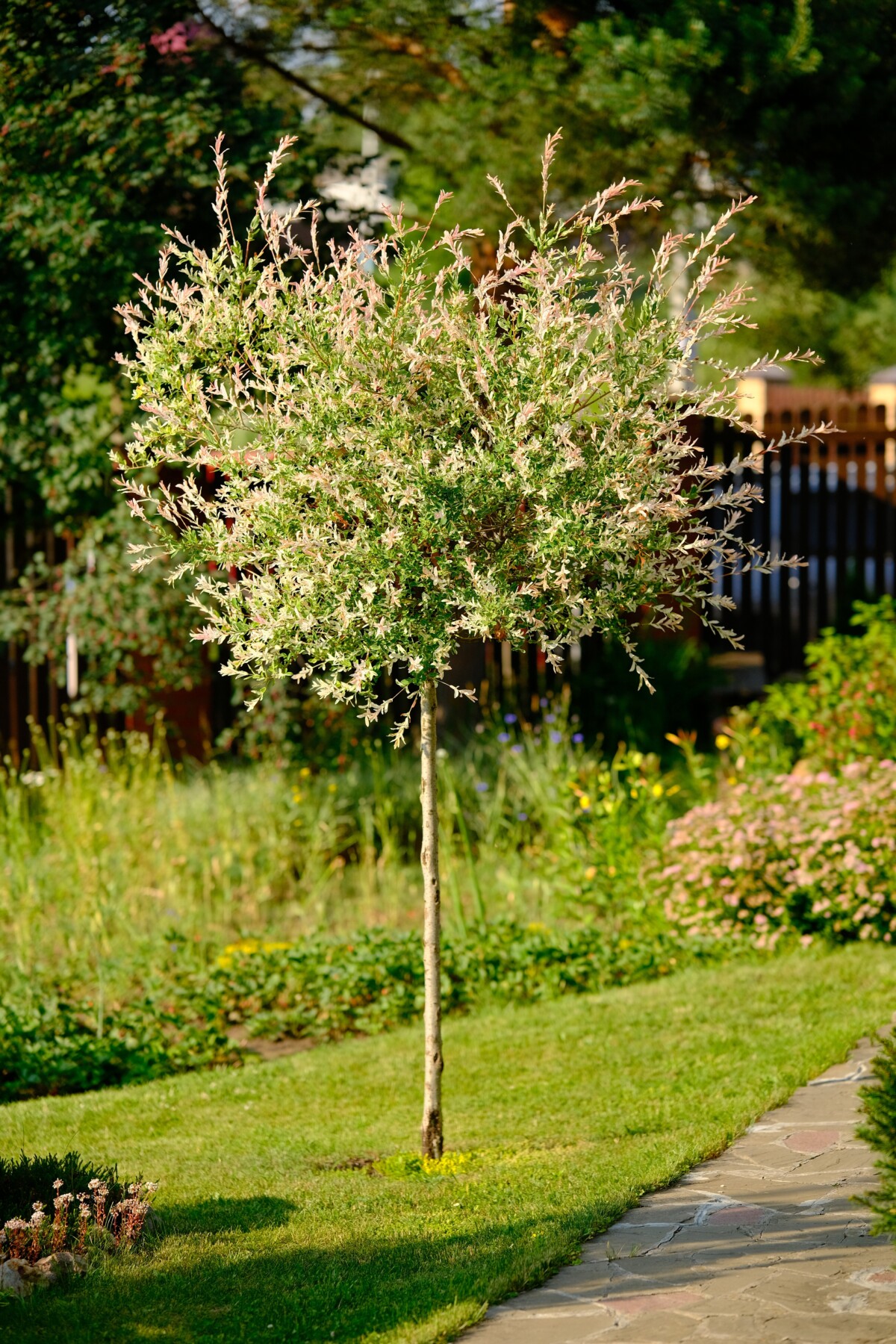
Also called a flamingo dappled willow, the Salix integra ‘Hakuro-nishiki’ is an absolute stunner: instead of the weeping variety, it features gracefully hanging branches, delicate stems, and variegated leaves that burst out in a flurry of star-like blooms.
If we’re getting technical, the dappled willow is actually regarded as a shrub more than a tree, meaning it’s often grown at hedge height or used as a border, but the dappled willow can actually grow up to ten feet or higher.
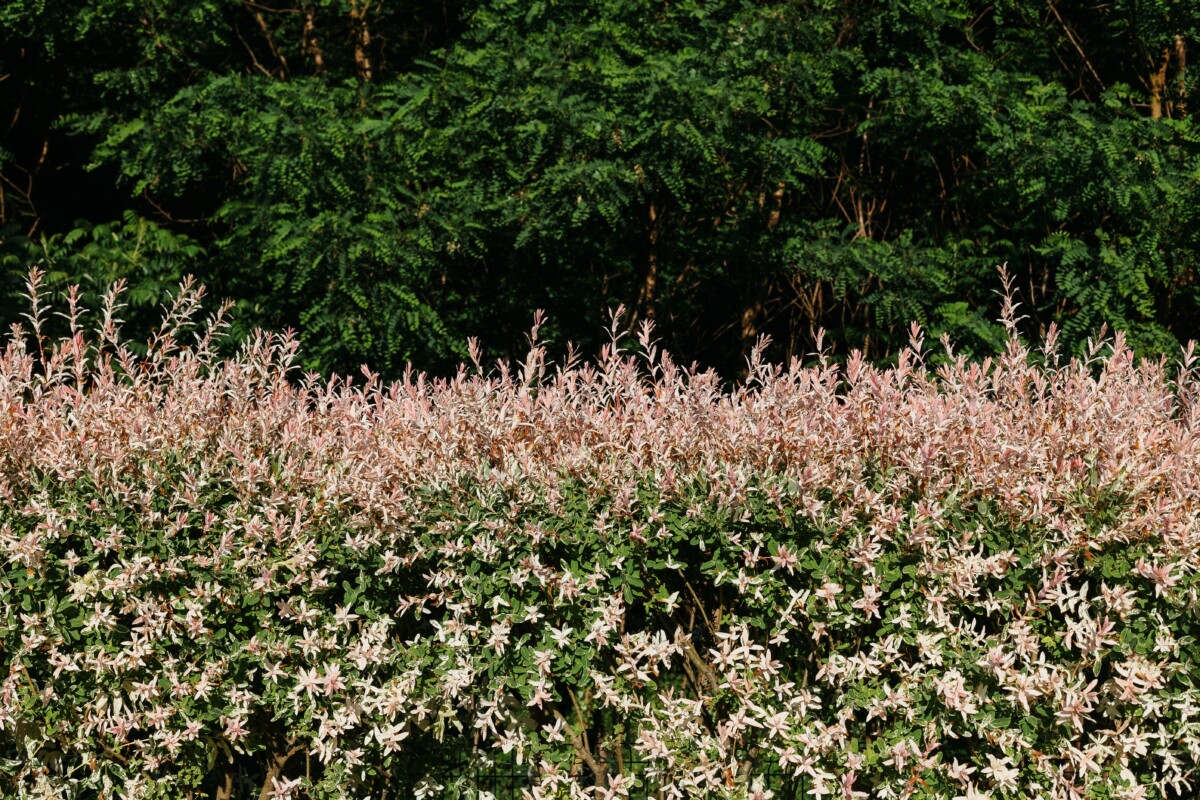
So why should you plant a dappled willow tree for yourself? We’ve listed our top reasons below:
#1 – They’re super easy to care for
A low maintenance wonder, the dappled willow tree is pretty happy once planted – which is best done in either the mid to late fall or in the early spring. It doesn’t need fertilizer on the regular, either: Just some pruning in the winter and another light prune in the summer if you’d like to maintain a particular shape. Other than that, the plant will happily get on with what it does best – growing!
#2 – They grow really quickly
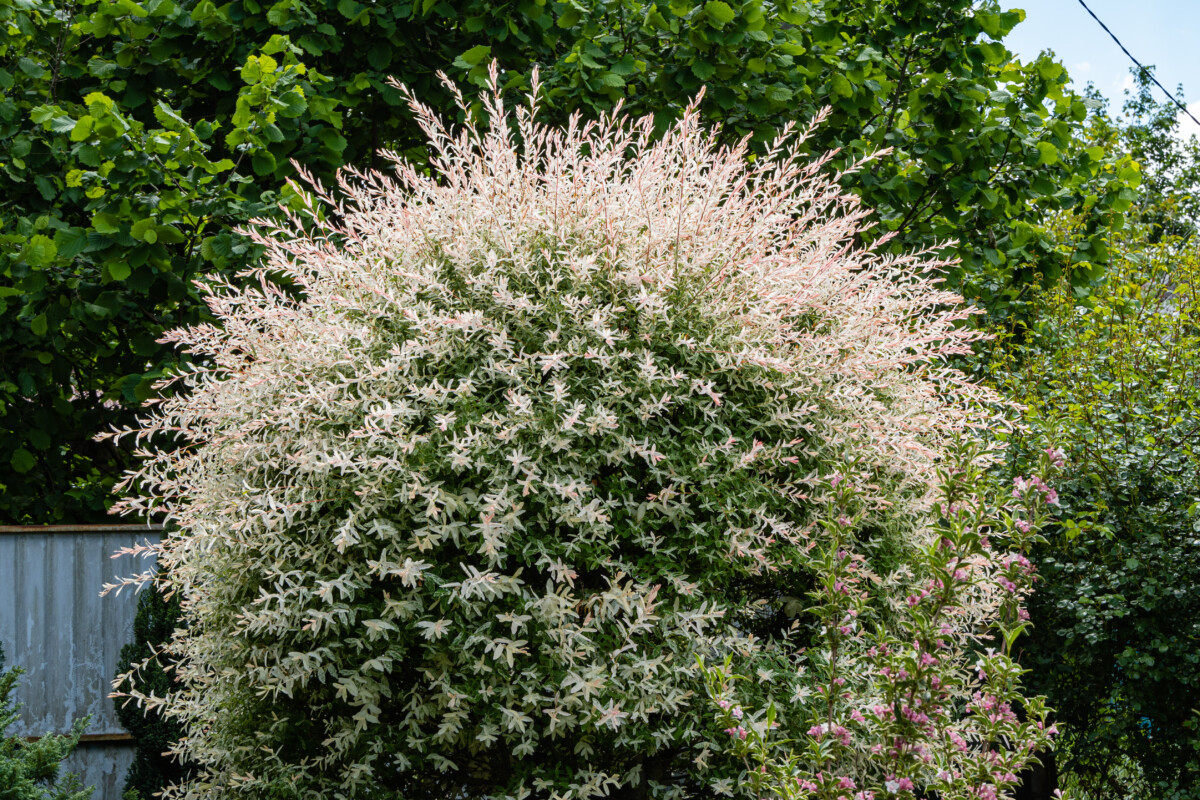
Dappled willow trees are speedy: They can grow around 2-3 feet in a year, and will fill out well too. In just a few years they’ll have reached their full height! As a result they’re a fantastic and rather unconventional choice for privacy screening between you and your neighbors, or indeed outside your home or on the street.
#3 – They have lovely flamboyant foliage
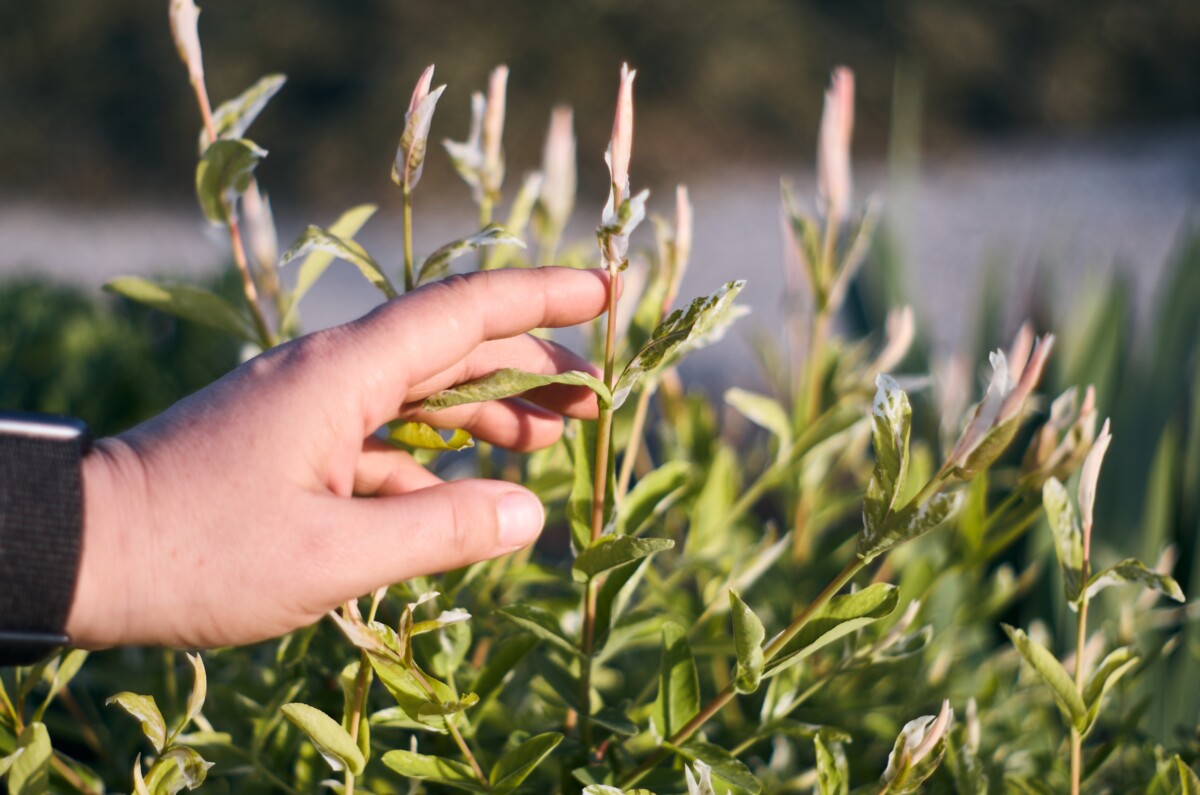
Dappled willows are also known as the tri-color willow, thanks to the spectacular breadth of shades and colors that appear throughout the season. At first you’ll see a blush of light pink leaves in the spring, then they’ll move into a mottled green and white shade over the summer (hence the ‘dappled’ name). The same leaves will start yellowing in the autumn before eventually dropping off the branches – at which point the stems themselves begin to turn a gorgeous shade of coral-red!
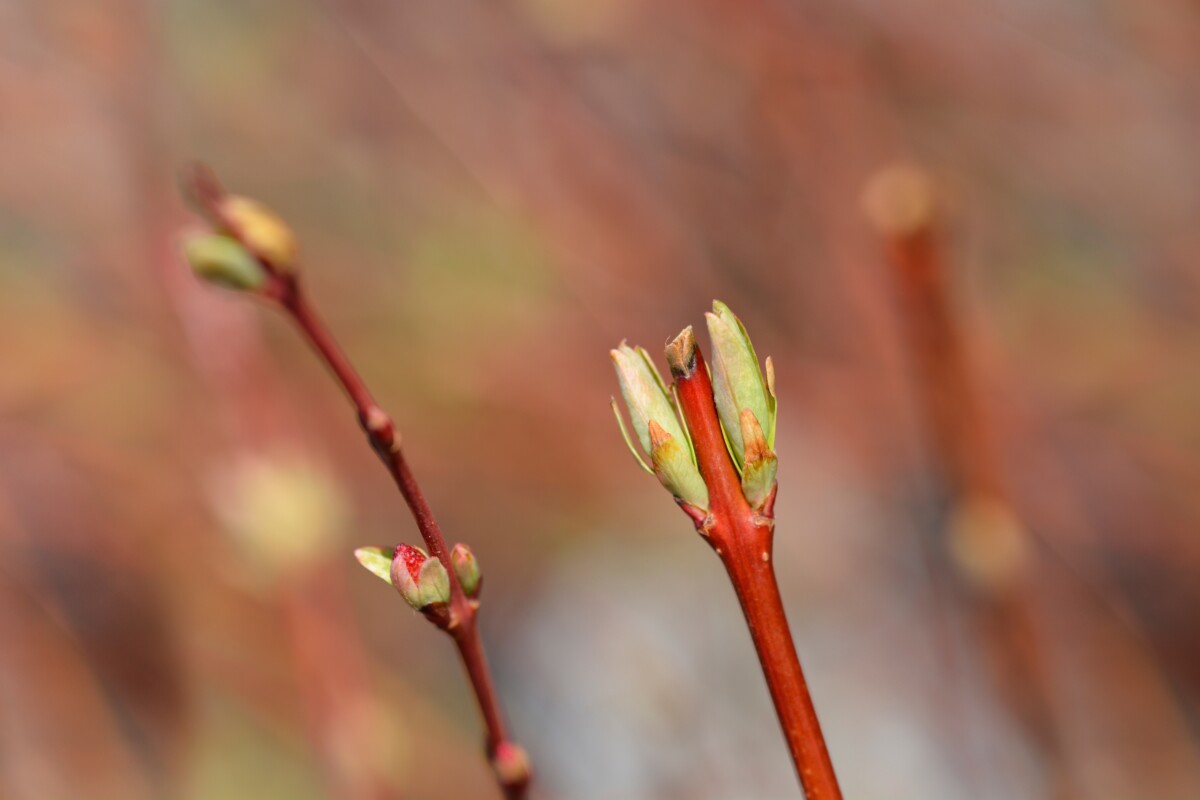
#4 – They can adjust to a variety of different soils
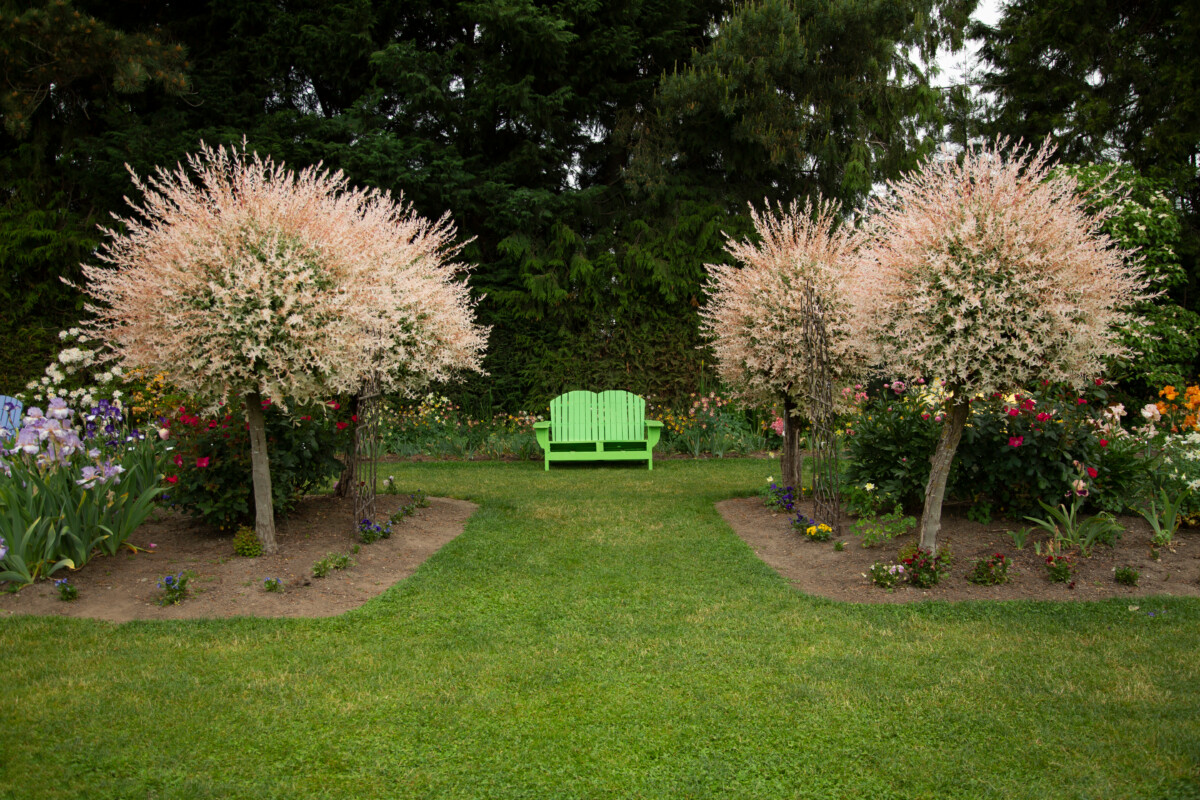
Although the dappled willow tree loves moist, well drained, and slightly acidic or alkaline soil the most, it’s still able to adapt to various types of soil. Even if you plant it in clay-heavy soil or a sandy soil, you’ll still see growth – although it might not produce particularly bright foliage.
If you’ve already got a moist area of your garden that gets a bit of sun, why not try out a dappled willow there?
#5 – They’re perfectly happy in a pot
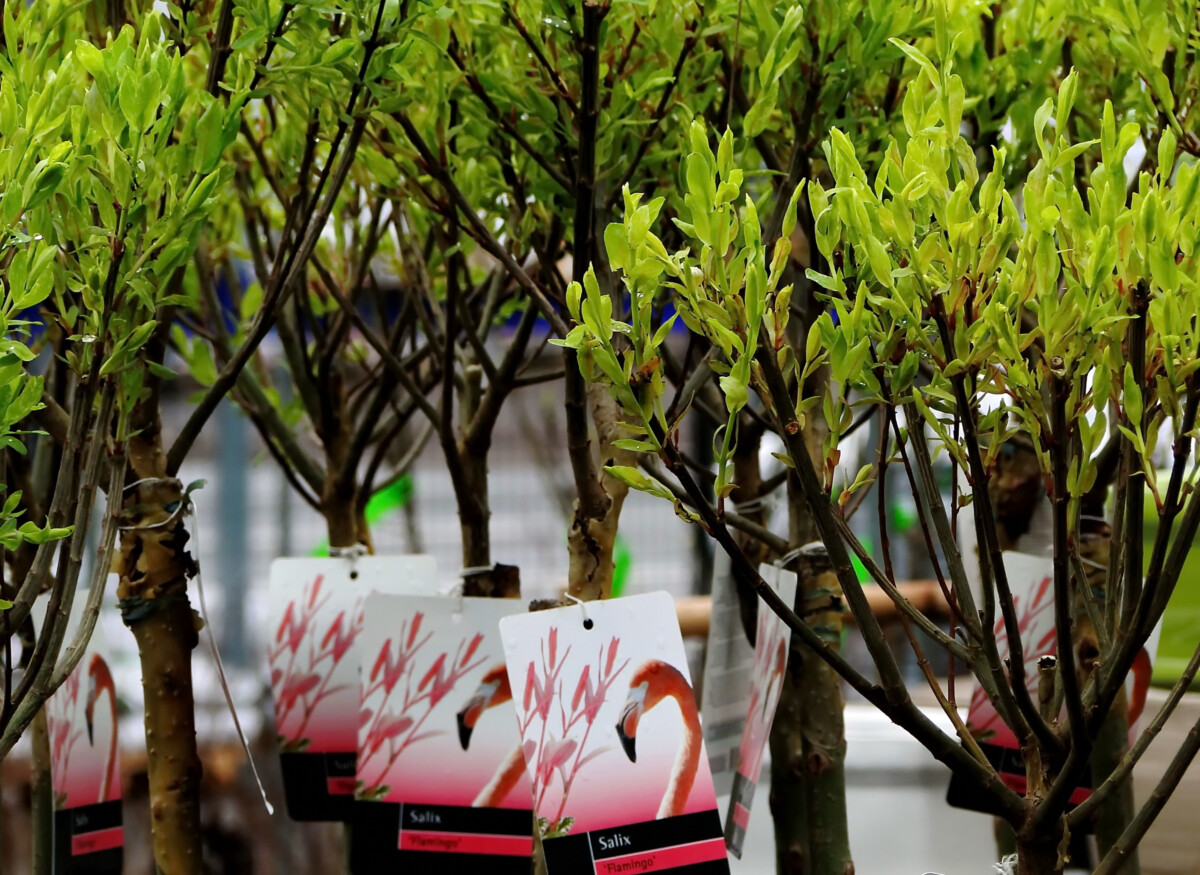
While many plant them directly in the ground, a container works equally well for a dappled willow. In fact, if you want to keep your willow on the smaller side it’s probably best to opt for a pot-grown version. Just keep an eye on the moistness of the compost and adjust its watering schedule accordingly, as it’s more likely to dry out in a container (but don’t worry – we’ve explained its water needs below).
#6 – They’re tolerant of different weathers
It may look delicate at first glance, but a dappled willow tree is hardy enough to withstand frost, so you don’t have to worry about bringing a potted willow indoors over winter, nor employing protective measures for your garden-planted trees either.
In the US, dappled willows can be planted outdoors throughout Zones 4 to 9, though they best suit Zones 5 to 7. As a result, planting in the North and Midwest is the optimal region for these trees.
How to care for your dappled willow
Now you’ve been convinced to opt for a dappled willow tree in your backyard – but where exactly should you plant it? We’ve put together a general care guide for looking after your willow for years to come.
Where to plant a dappled willow tree?
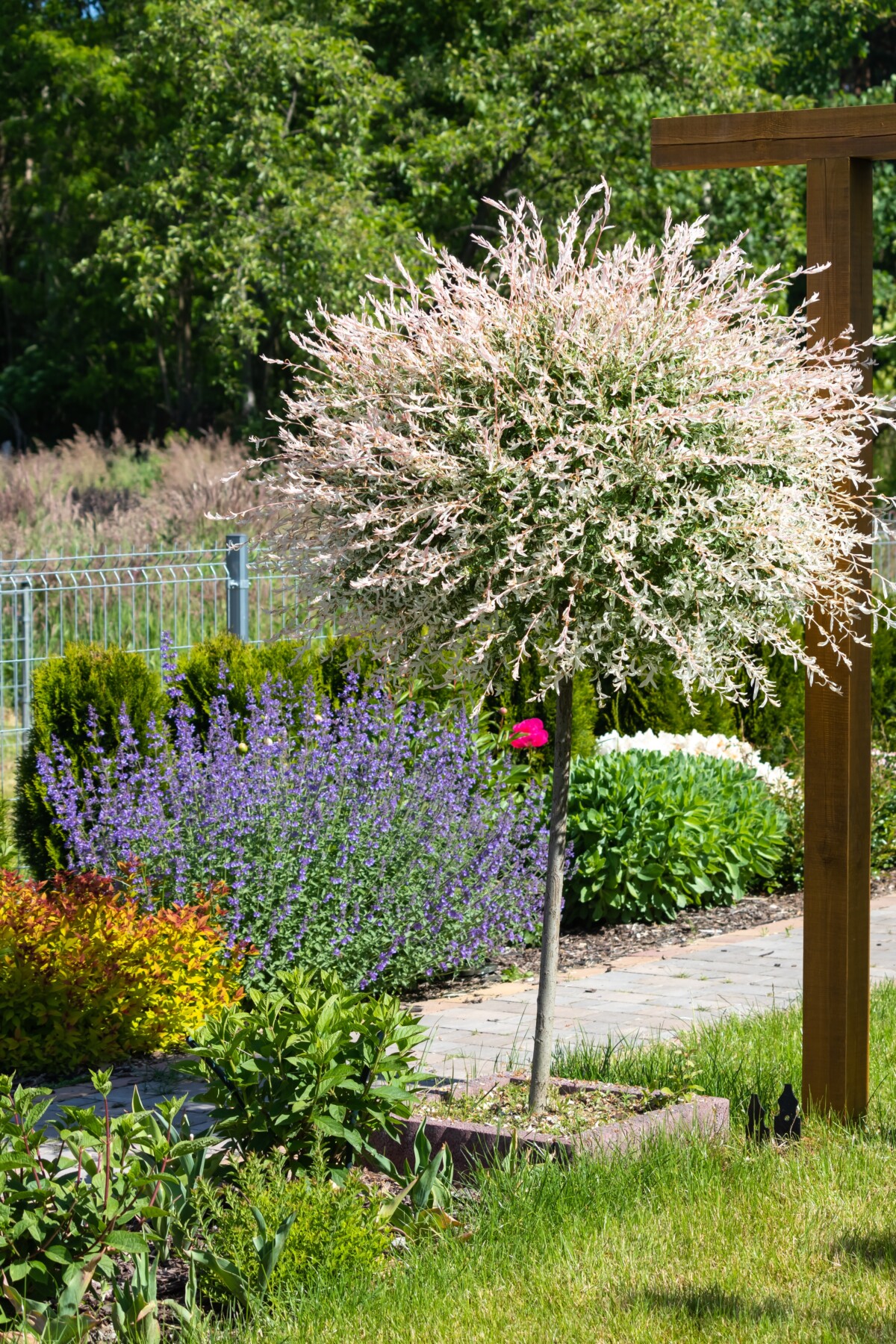
Choosing the perfect spot for planting out a dappled willow can be a bit of a balancing act: perhaps conversely, these plants thrive in plenty of sunlight but also want a rich, well draining and moisture-heavy soil. With that in mind, it’s probably better to focus on finding a place with their light requirements and then keeping an eye on the watering schedule.
Of course, you’ll also want to think about your own visual aesthetic! A dappled willow is a great choice for a standalone focal point in your yard, but grouping a few plants together also creates a lovely shrub border too.
What light does a dappled willow need?
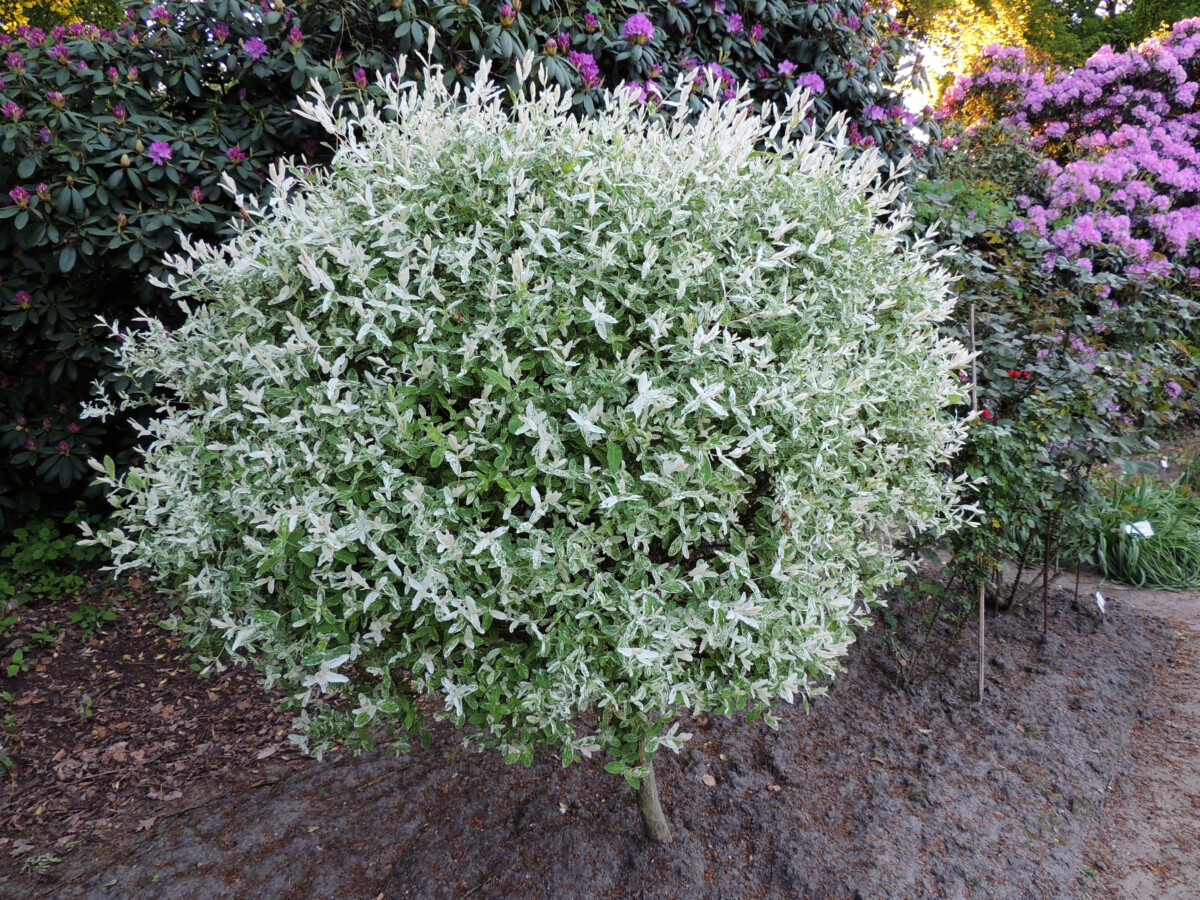
Generally speaking, about six hours of sunlight a day will keep your dappled willow happy. More than this might be too strong, but significantly less will cause muted colors. Aim for ‘full sun’ for these guys, and keep away from ongoing shade.
You’ll know the light is right when the foliage is a bright green shade. A good amount of leaf variegation is also a sign you’re getting enough light.
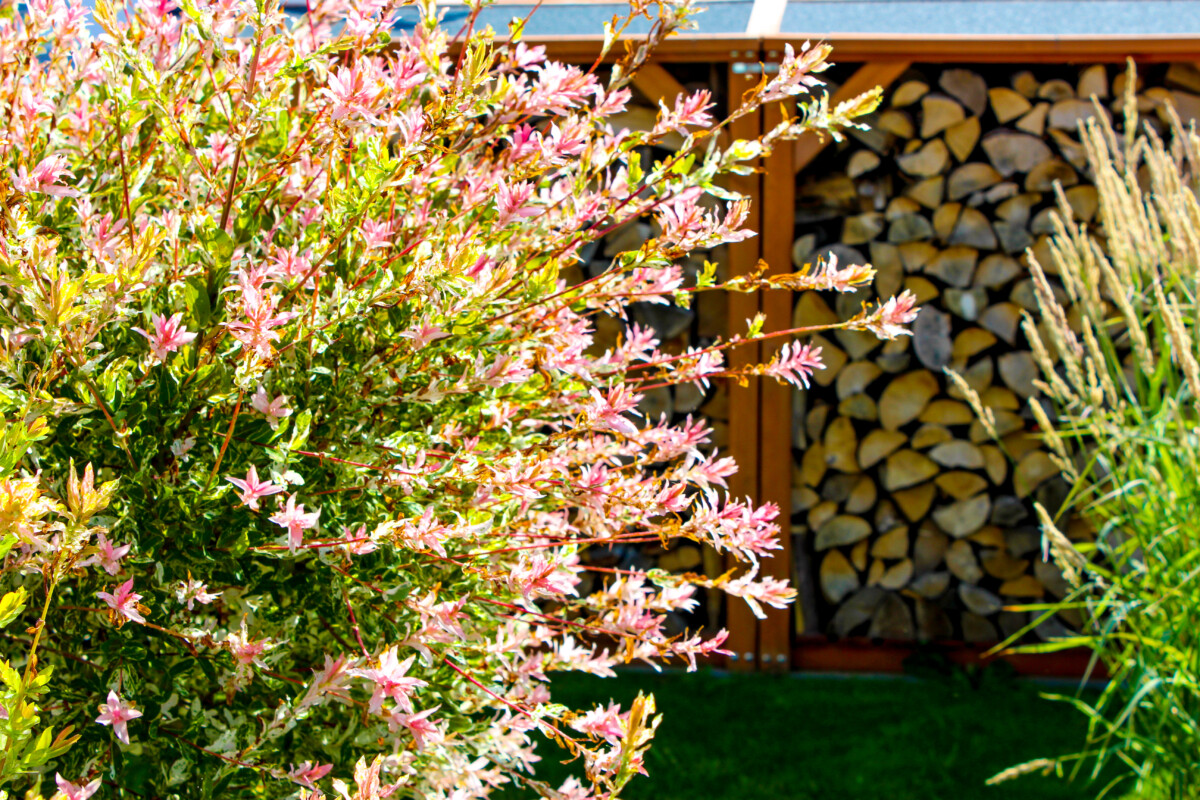
What soil does my dappled willow tree prefer?
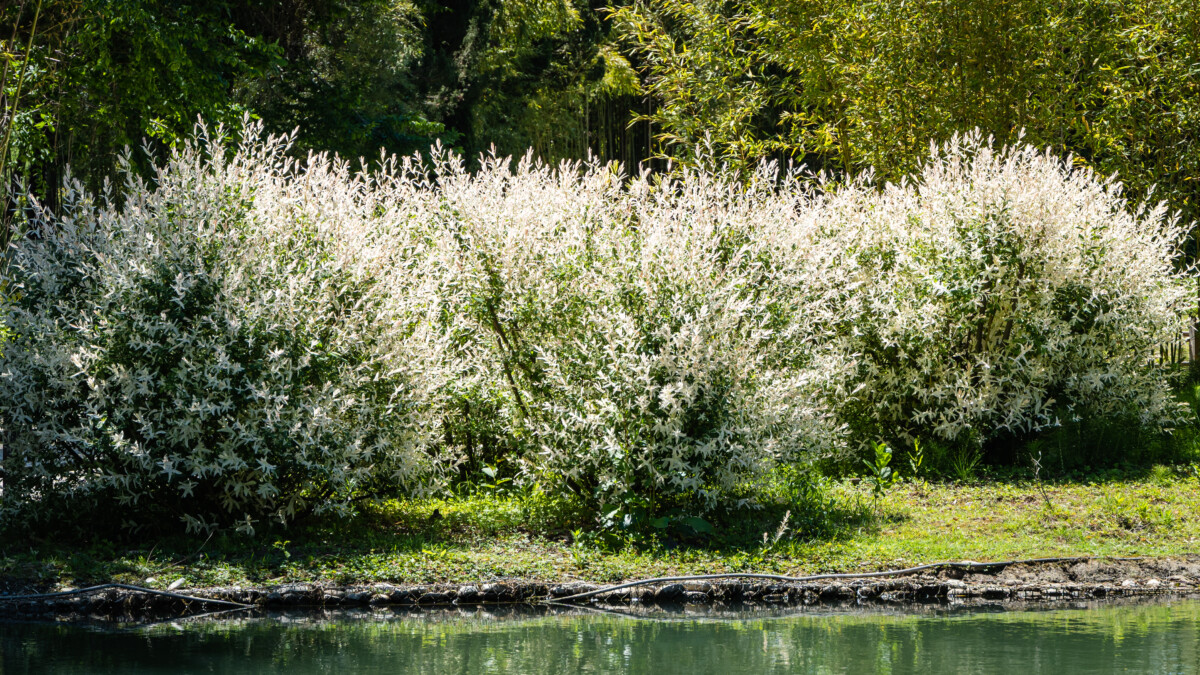
Dappled willows love water, to the extent that planting in consistently moist soil is an important requirement. Being planted beside a water source like a pond or river bank is their dream location, but an appropriate spot ultimately requires good irrigation so that when the soil is watered it can retain that moisture. They can sometimes even handle soggy soil – but it’s worth knowing it could be a risk.
When should I water my dappled willow?
If your dappled willow is in the early stages of growth, it will need a bit more care and attention – particularly in terms of water. These plants are moisture lovers and the youngest ones are keen for a good, deep drink twice a week to help their roots to properly spread and develop. You can reduce the watering frequency once it’s properly established (i.e. at least a year old) and give it at least an inch of water once a week.
Pruning tips for your dappled willow tree
Pruning a dappled willow is an absolute joy: they respond really well to pruning, and actually benefit in terms of both appearance and health.
Because they’re such fast growers, pruning helps the foliage to thicken up and produce plenty of new foliage featuring that gorgeous pink tint. That means you can easily prune to your desired shape – be it shrub, hedge or even a uniform lolipop shape – and not worry about harming the plant overall.
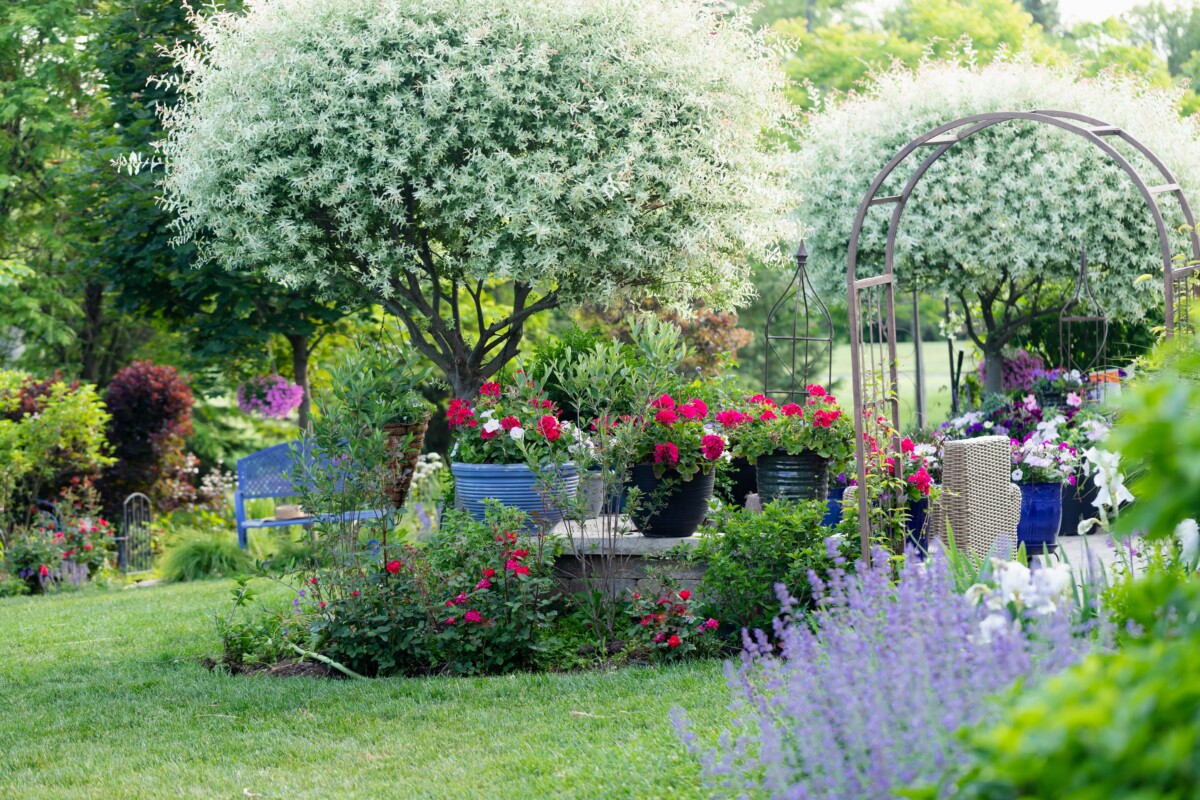
If you’d like to actively limit a dappled willow’s size and/or shape, that’s easily achievable too – it just means a bit more pruning attention.
The best time to prune is in the late winter when the plant is still dormant but is just about to start growing again. Any diseased branches can also be lopped right off, which will encourage new growth.
What else should I bear in mind when planting a dappled willow tree?
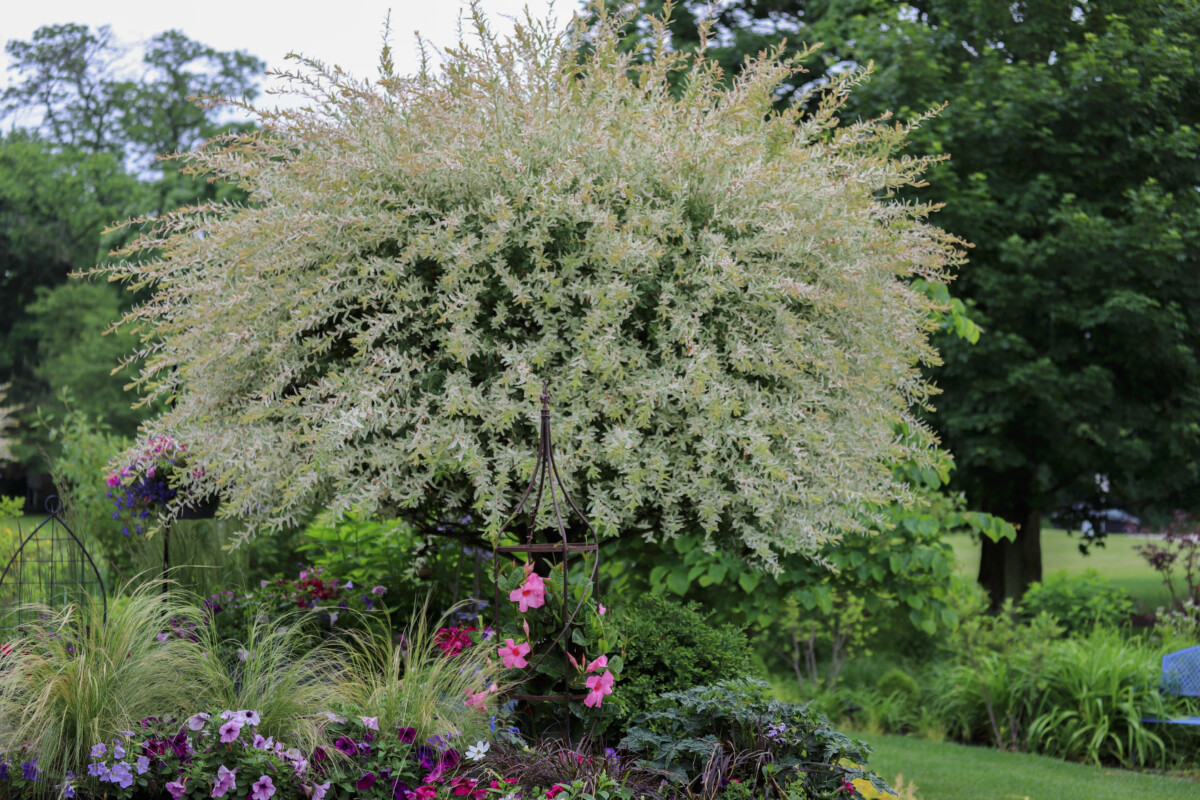
When planted out as a feature tree, dappled willows need sufficient space around them to allow for their sideways growth. Planting neighboring plants at least six feet apart also helps to minimize how often you’ll need to prune.
If you’re planning for privacy screening, you can plant up your willow trees in double or triple rows with around two to three feet between them. If, however, you’d like them to have a thick hedge-style appearance, you can close this gap even further.
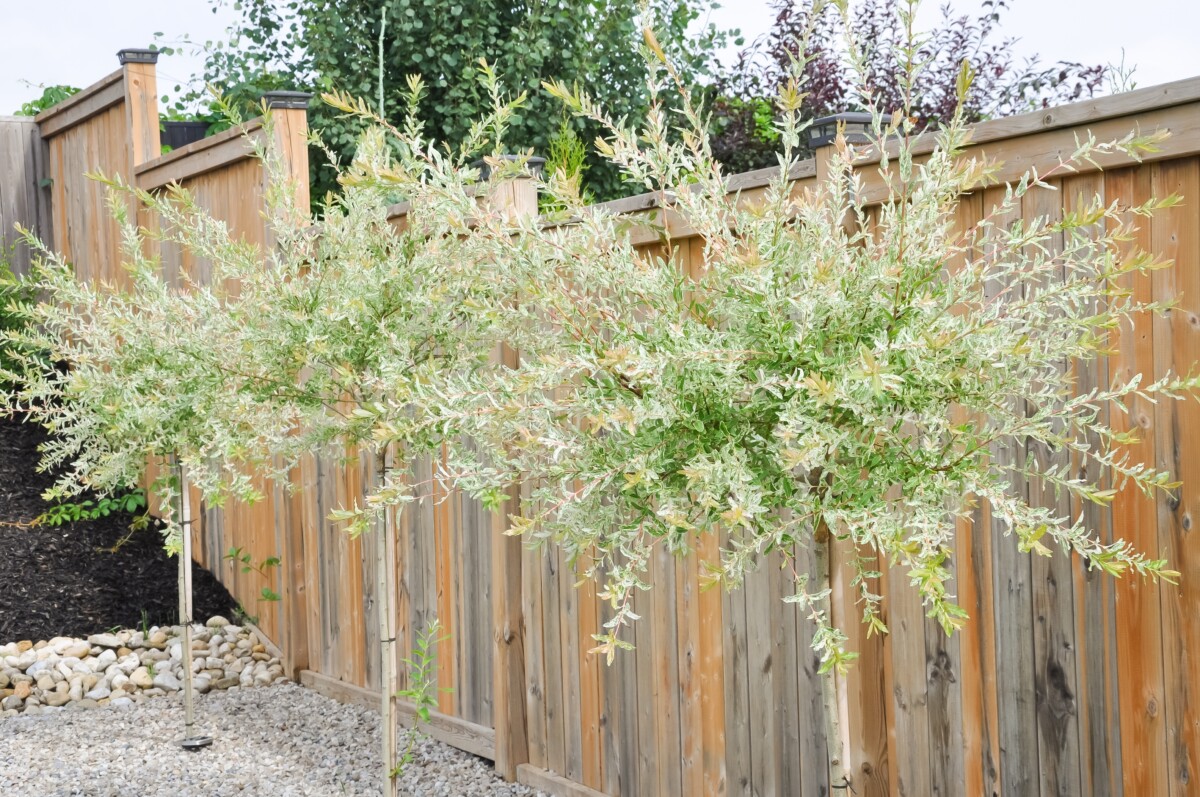
Because of their root systems spreading significantly as they search for water, keeping a dappled willow a good distance away from your house is a sensible idea. A dappled willow’s roots are invasive so stay aware of where they’re planted in relation to septic tanks and patios.
The tips of the dappled willow’s leaves can sometimes turn brown, which is an indication of poor health. These plants are susceptible to fungal diseases like willow rust disease, but can equally be affected by drastic changes in temperature, lack of sufficient water, and too much fertilizer.
Sourcing Dappled Willow
As always, the best place to purchase plants is from your local plant nursery or garden center. That way the knowledgeable staff can assist you with care tips and advice.
If you can’t source a dappled willow in your local area, then you can purchase one from Green Promise Farms on Amazon here.

